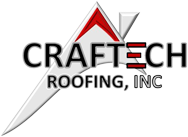Roof damage can have significant consequences, so it’s wise to prevent it from happening in the first place. Insulation seals gaps to prevent unwanted heat and moisture from seeping through the roof. Ventilation creates air circulation in your attic to help keep the entire building at a comfortable temperature.
The Importance Of Insulation
When you hear the word “insulation,” you might think of keeping something warm in the winter. Roof insulation is equally good at keeping heat out as it is keeping it in. It works with your heating and air conditioning to maintain a steady temperature indoors.
Cooperation between your roof’s insulation and your HVAC system translates into energy and money savings. Good insulation also eases the workload on your furnace and air conditioner. They will last longer and require fewer repairs.
Types Of Insulation
Roof insulation is made from various materials, from standard fiberglass to eco-friendly options. The best type and material for your home will depend on your location, what’s available in your area, and your budget. If you’re upgrading insulation (rather than replacing it), you should also factor your current insulation into your plans.
Study your state’s building codes to ensure the insulation you’re interested in meets those requirements. R-value is a crucial measurement to keep in mind. It’s a grade that tells you how well a particular material keeps heat or cold inside. You can also leave the research to our knowledgeable roofers. We know what works and lasts in Denver, after all.
- Batt Insulation
- Spray Foam Insulation
- Loose-Fill/Blown-In Insulation
- Rigid Insulation Boards
- Structural Insulated Panels
Why Ventilation Matters
Without good ventilation, hot air gets trapped inside your home. As warm, humid air stagnates in your attic, it can cause condensation and other problems. These issues can lead to permanent damage that shortens your roof’s useful lifespan.
- Ice dams can form in the winter and cause water damage.
- Mildew and mold grow in humid areas, like a poorly ventilated attic.
- Poor ventilation forces your air conditioner to work harder, causing it to break down faster.
- Hot attics make it difficult to keep a building cool, especially in the summer.
- Shingles bake from beneath and age prematurely.
Replacing Your Roof? Install Vents!
Vents are easy to install when replacing a roof. Many types fit under shingles, so it’s simple enough for a roofer to do during the replacement process. Adding ventilation to an existing roof is trickier but not impossible since other types of vents can be mounted to the roof’s surface.
Types Of Ventilation
Roof vents come in various sizes and shapes, but all allow your building to breathe. The best ventilation systems include both intake and exhaust vents. Intake vents bring air inside, and exhaust vents remove air from your attic.
Active or mechanical ventilation systems require a power source to move air in and out of a building. Passive ventilation systems utilize natural forces like wind and convection to circulate air. Neither method is inherently better than the other, but which one is more beneficial for your home or business will depend on structural factors and the local climate.
- Gable Vents
- Solar-Powered Vents
- Ridge Vents
- Over Fascia Vents
- Static/Turtle/Box/Louver Vents
- Off Ridge Vents
- Soffit Vents
- Roof Turbines (Aka Whirlybirds)
- Cupola Vents
- Hard-Wired Powered Vents
- Drip Edge Vents
Talk To Our Denver Roofing Specialists Today
Improving your home’s insulation and ventilation will keep your roof (and the rest of your house) in peak condition. Every building is different, so talk with an experienced roofer before making final decisions. In Denver, call Craftech Roofing today to schedule an inspection.



